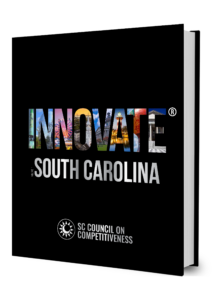Career Centers: The New Workforce Suppliers
I want you to imagine standing at the edge of a river. On one side are thousands of students—bright-eyed, full of energy, buzzing with ideas and untapped skills. On the other side are industries—manufacturing, healthcare, transportation—calling out for skilled workers, desperate for fresh talent to keep their operations alive and thriving. The water in between? That’s the skills gap, and career centers are the bridge.
In 2025, South Carolina is experiencing a critical workforce moment. Manufacturing is projected to need tens of thousands of new workers over the next decade. Healthcare is scrambling to fill roles from nursing to specialized technicians. Transportation, distribution, and logistics (TDL) are growing so rapidly that companies can’t keep up with demand. Workforce needs are not a future problem; it’s a right now problem, and the solution is not complicated. It’s Career and Technical Education (CTE) working in genuine partnership with industry.
Partnership is Not a Donation—It’s a Supply Chain Strategy
Industry doesn’t need to “help” career centers. They need to work with us as their suppliers. Think of us as the newest and most important vendor in your supply chain, supplying the most valuable product you’ll ever need: skilled, trained, credentialed, and motivated people.
But here’s the catch: for us to produce graduates ready for the first day on the job, industry has to trust educators to train students using the same tools, technology, and methods used in their facilities. Outdated equipment produces outdated skills. The students in our welding bays, health science labs, mechatronics classrooms, and CDL simulators need to be touching your equipment—learning to solve your problems—so when they arrive at your door, they’re not “entry-level.” They’re “ready-to-level-up.”
Credentials as Currency
Our students earn high-level, industry-recognized credentials before they even walk across the graduation stage — certifications like AWS welding, ASE automotive, NCCER construction, NHA healthcare, and logistics credentials recognized worldwide. These are not “nice to have” certificates; they are currency in today’s job market. They represent a promise: This student can do the work, right now.
The Energy You Can’t Manufacture
There’s something industry cannot replicate inside a factory or an office, the energy of a student learning a skill for the first time. When you visit a career center, you see it everywhere: the spark when a health science student perfects a phlebotomy draw, the pride when a welding student lays down a clean bead, the grin when a CDL student backs a truck into a dock without touching the cone. That enthusiasm is rocket fuel!
But here’s the heartbreaking truth: that fuel burns out if we don’t let them use it. Too often, outdated interpretations of the 18-year-old age requirement in the Fair Labor Standards Act (FLSA) keep these students from getting work-based learning experiences or part-time jobs in their field. The law intends to protect, but its misinterpretation is costing us workforce readiness and costing students their momentum. Advocacy for youth placement isn’t just about filling positions; it’s about building self-efficacy. When a 17-year-old works alongside seasoned employees and contributes meaningfully to a team, they walk taller. They see themselves not as “future workers” but as current professionals. They see themselves as someone who doesn’t have to compete with 30-year-old adults in the employment market because their cutting edge preparations make them the preferred candidate for the job.
Why This Matters—Now
South Carolina’s 2025 workforce outlook projects that manufacturing alone has more than 60,000 projected openings in the next decade. Healthcare? Even higher. In transportation, distribution, and logistics, driven by our state’s ports, growing interstate hubs, and e-commerce fulfillment, demand is surging faster than training pipelines can keep up. If career centers are the bridge, industry must be the traffic flowing across both ways—sharing needs, sharing tools, sharing opportunities.
A Call to Industry
So, here’s my one big idea: Stop thinking of career centers as “schools.” Start thinking of us as strategic partners in your talent supply chain. We are your research and development lab for workforce development. We are your training department without payroll costs. And our students are your most loyal employees waiting to be hired, molded, and retained.
I’m asking you to invest, not just in donations, but in trust. Bring us your equipment. Share your processes. Let our students work in your spaces before they graduate. Help us keep their enthusiasm burning, so when they cross that bridge, they land running because the truth is, we’re not just teaching students how to work. We’re preparing them to lead, to innovate, and to stay. And in a world where workforce shortages are the headlines, that’s the most valuable supply chain you could ever secure.













